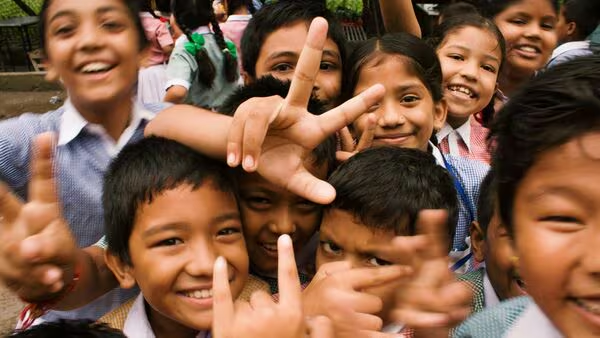New Delhi, May 2 – India is projected to have 350 million children by 2050, accounting for nearly 15% of the global child population, according to the UNICEF State of the World’s Children 2024 report. Despite a projected population decline of 106 million children compared to today, India remains a crucial player in safeguarding the global future of children.

🌍 Climate Crisis: A Major Threat to India’s Future Generations
Children in India face acute risks from extreme heat, air pollution, and floods — challenges expected to intensify dramatically by 2050. The report reveals that children’s exposure to extreme heatwaves will increase eightfold globally compared to the early 2000s.
India, already ranking 26th in the Children’s Climate Risk Index, must contend with this crisis while a large portion of its youth remains in rural and low-income communities, with limited resilience against such hazards.
🏙️ Urbanisation and the Need for Child-Centric Planning
By 2050, half of India’s population will reside in urban areas. The UNICEF report urges the Indian government to invest in sustainable, climate-resilient urban infrastructure that is child-friendly and inclusive.
“Decisions made today will shape the world our children inherit,” said Cynthia McCaffrey, UNICEF India Representative. The report calls for immediate investments in healthcare, education, skill development, and digital access for all children.
📉 Demographic Shifts with Global Implications
India, along with China, Nigeria, and Pakistan, will continue to host the largest child populations by mid-century. Despite declining numbers, these countries bear a shared responsibility to protect children’s rights and ensure equality and resilience in an increasingly volatile world.
🌐 Technology: A Double-Edged Sword
UNICEF also warns of the growing digital divide. Only 26% of people in low-income countries have internet access, compared to 95% in high-income nations. As frontier technologies like artificial intelligence emerge, inclusive policies are necessary to ensure they benefit all children equitably.
“Children are vulnerable to direct and indirect impacts of climate change,” said Suruchi Bhadwal of TERI. “As active agents of change, they must be equipped with tools and knowledge to be part of the solution.”
📚 Climate Education and Youth Empowerment
Kartik Verma, UNICEF Youth Advocate and COP29 representative, emphasized that climate change is a child rights crisis. He called for comprehensive climate education and engagement with children in policymaking to build a more sustainable future.
🔵 GoBlue Campaign: Illuminating Hope
To mark the report’s release on World Children’s Day, UNICEF illuminated national landmarks like Rashtrapati Bhavan, India Gate, and Qutub Minar in their signature blue. The GoBlue campaign champions inclusion, equality, and non-discrimination for every child in India and worldwide.
✅ Conclusion
India stands at a pivotal moment in shaping the lives of its 350 million future children. Addressing climate risks, bridging the digital divide, and investing in inclusive urban planning are essential for securing their rights and building a resilient, equitable society. As UNICEF highlights, the time to act is now.
For more insights, read the full UNICEF report: The State of the World’s Children 2024.









